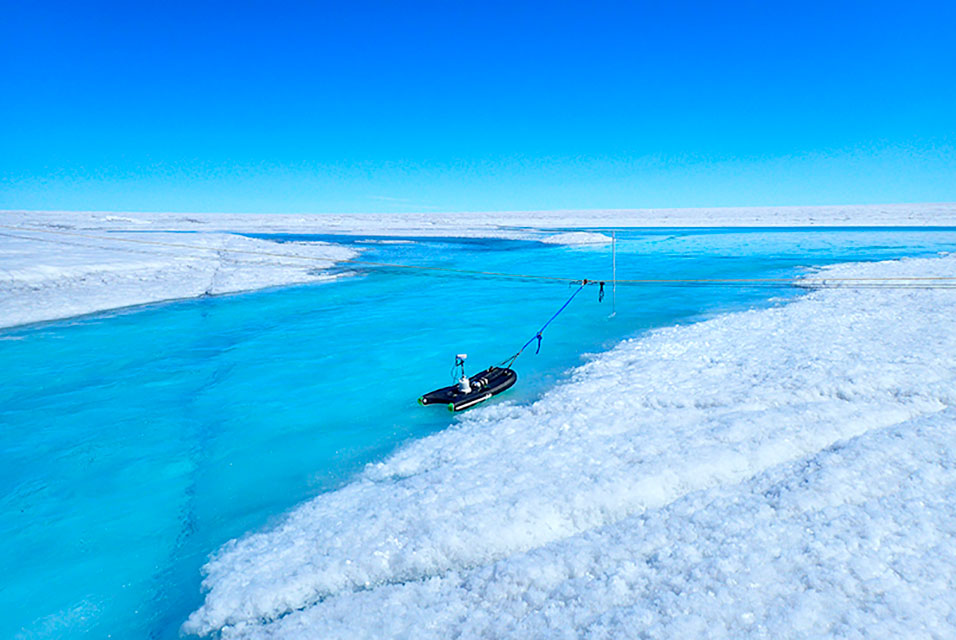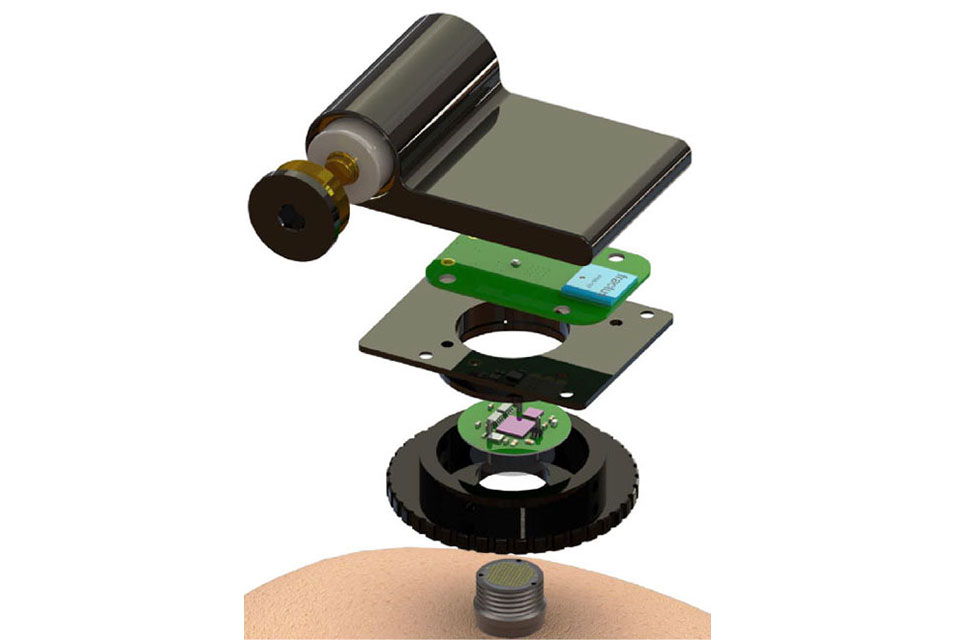PROVIDENCE, RI.- With data from a 2016 expedition, a team of scientists from
Brown University and NASA are shedding more light into the complex processes under the Greenland ice sheet that control how fast its glaciers slide toward the ocean and contribute to sea level rise.
On the surface of the ice sheet, bottomless sinkholes called moulins can funnel meltwater into the base of the ice. As that water reaches the ice sheet’s underlying bed, it can make the ice detach slightly and flow more rapidly.
Glaciers that slide faster can eventually lead to the ice sheet melting a bit faster than expected, also increasing the amount of ice calved into the ocean. With a vast surface area roughly the size of Mexico, Greenland’s melting ice is the largest contributor to global sea level rise.
In a new study, published on Monday, April 5, in Geophysical Research Letters, the authors concluded that the one important factor influencing the speed of a sliding glacier in southwest Greenland was how quickly water pressure changed within cavities at the base of the ice where meltwater meets bedrock.
“Even if the cavities are small, as long as the pressure is ramping up very fast, they will make the ice slide faster,” said Laurence C. Smith, a professor of environmental studies and Earth, environmental and planetary sciences at Brown.
It’s the first time that observations directly from field research show how changes in the volume of water under the Greenland ice sheet drive the flow velocities of a glacier.
The findings contradict a long-held view about ice sliding velocities and water stored under a glacier known as steady-state basal sliding law, which has helped scientists predict how fast ice sheets will slide based on the total volume of water underneath the ice.
Lauren Andrews, a glaciologist at NASA’s Goddard Space Flight Center in Greenbelt, Maryland, likes to explain the interactions between surface meltwater, basal ice and the bedrock as tires that slide very rapidly on a wet road because of hydroplaning.
“If you have a rapid perturbation of water going into the subglacial system, you overwhelm the system, and so you create essentially a layer of water at the interface that's not contained in channels or cavities anymore,” Andrews said.
It's not the actual volume in water that drives ice velocity, she explained, but the speed with which it builds up at a bedrock ice interface. For slow increases in water, the subglacial system has time to evolve to accommodate the same amount of water.
Until recently, the lack of data directly from the ground had made it difficult for scientists to probe the interactions that speed up glaciers in Greenland. One of the trickiest aspects preventing scientists from fully understanding ice sliding dynamics is the need to pair measurements of the flow of meltwater into a glacier with observations of the motion of the ice at the surface.
The research team set camp on Russell Glacier near Kangerlussuaq, Greenland, and studied a glacial river named to honor the late NASA researcher Alberto Behar. By comparing GPS measurements of the motion of ice at the surface with the amount of meltwater discharging into a vertical shaft in the glacier, known as a moulin, as well as meltwater exiting the glacier’s edge, the team identified changes in water stored under the ice that corresponded with small accelerations in the ice at the surface. Past research on small alpine glaciers guided the design of the study.
“There's not a direct one-to-one relationship between the melting on the top and the meltwater exiting the ice sheet, because the water is going through goodness knows what down below,” Smith said.
The new findings will be valuable for satellites such as the upcoming NISAR satellite mission, a joint Earth-observing mission between NASA and the Indian Space Research Organization, which will measure changes in ice surface velocity with unprecedented resolution for the entire Greenland and Antarctic ice sheets, said Thorsten Markus, Cryospheric Science Program manager at NASA. Projected to launch no earlier than 2022, NISAR may also enable further studies of ice surface velocities at much larger scales.
Eventually, combining satellite observations with data acquired from the ground will be able to help scientists as they consider adjusting their models to represent the hydrology at the base of ice sheets more accurately.
Integrating new data in models is a gradual process, but Smith hopes the new findings can improve how climate models predict the pace of future sea level rise from Greenland’s ice in the face of climate change.
“The only tools that we have to predict the future are models,” Smith said. “We have remote sensing, and we have field campaigns, so if we can use both to improve our modeling capability, we'll be better able to adapt and mitigate sea level rise and climate change.”
The fieldwork is one of many projects NASA has supported over the last two decades to interpret satellite observations and study the Greenland ice sheet using local field data.










